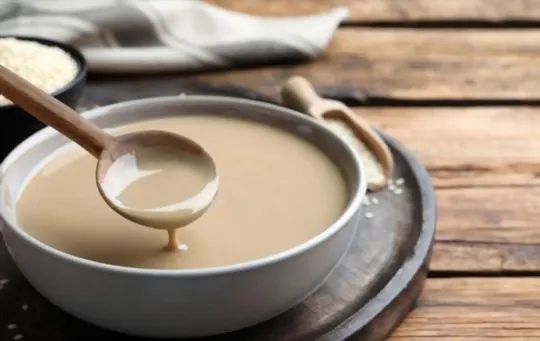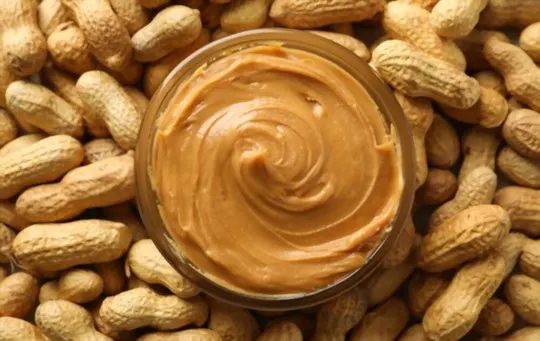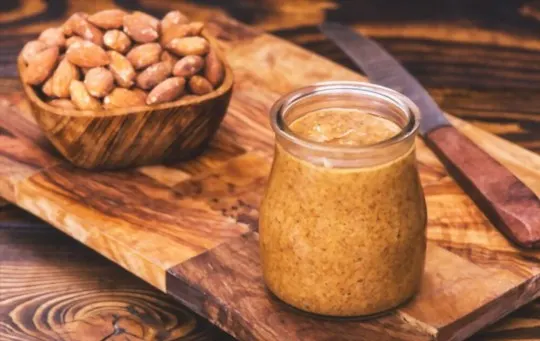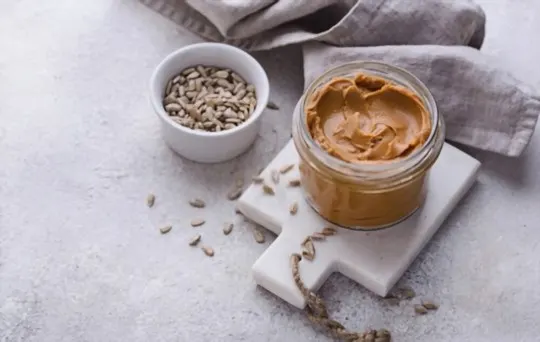Struggling to find a substitute for Chinese Sesame Paste? You’re not alone.
With its growing popularity, it can be hard to find.
In this article, we’ll explore the five best substitutes for Chinese Sesame Paste and how they can enhance your cooking.
What is Chinese Sesame Paste?

Chinese sesame paste (or tahini) is a thick, creamy condiment made from hulled sesame seeds.
It has a nutty, earthy taste and a slight bitterness.
This paste is commonly used in Chinese dishes such as noodle soups, dumplings, salads, and as a topping for egg or vegetable dishes.
It can also be added to dips, sauces and marinades for added flavor and texture.
When using Chinese sesame paste for baking or cooking recipes needs attention to some tips.
Always start with adding small amounts of the paste to your dish and adjusting the amount in accordance with your own taste preference.
When combined with other ingredients, it can become quite salty so it’s important to watch the salt level of your dish carefully.
For best results pre-toast the sesame seeds before grinding them into paste; this will bring out more natural sweetness, aroma and flavor from the seeds.
5 Best Chinese Sesame Paste Substitutes to Consider
Unfortunately, it can be hard to find in grocery stores outside China.
Luckily, there are several excellent substitutes that can be used to replace Chinese sesame paste when cooking Chinese cuisine.
Here are five great options:
1 – Tahini

Tahini, also known as sesame seed butter, is a rich, creamy paste made from hulled or unhulled sesame seeds.
It is an excellent source of vitamins and minerals, including magnesium, calcium, phosphorus and iron.
It is also a good source of dietary fiber.
This delicious paste has a slightly sweet and nutty flavor that works well in savory dishes, sauces and spreads.
Since it has a thicker texture than Chinese sesame paste, you may need to thin it out with warm water or another liquid before using it to replace Chinese sesame paste in recipes.
2 – Peanut Butter

Peanut butter is the most well-known and widely available substitute for Chinese sesame paste.
It’s produced from ground up, roasted peanuts, and has a creamy texture similar to sesame paste.
While it won’t provide the same nutty flavor and umami notes as sesame paste, it still makes a good substitute for adding texture and creaminess to certain dishes.
Peanut butter is also a great way to boost the protein content of dishes such as noodles.
For the closest taste match, use natural peanut butter instead of creamy or crunchy varieties.
3 – Almond Butter

Almond butter has a very different flavor profile than Chinese sesame paste, but it can be an acceptable substitute for the ingredient if it is the only option available.
Almond butter is generally considered to be lighter in flavor than Chinese sesame paste and has a mild, nutty character with a slightly bitter aftertaste.
It also tends to be on the thicker side, making it a good match for this recipe.
When substituting almond butter for Chinese sesame paste, use about twice as much since almond butter does not contain as much fat and oil as Chinese sesame paste.
For example: if the recipe requires 1 tablespoon of Chinese sesame paste, use 2 tablespoons of almond butter.
Additionally, you should pay attention to other flavors in your dish when making this substitution — while the flavor of almond butter may overpower more delicate dishes, it could integrate well into bolder dishes with stronger flavors like vegetable stir-fries or curries.
4 – Sunflower Seed Butter

Sunflower seed butter is a fantastic alternative for Chinese sesame paste.
It is made from ground sunflower seeds, and depending on the brand, may have additional vegetable oils, sugar, salt and other spices added for flavor.
It provides an earthy nuttiness and creamy texture similar to tahini.
The butter can be found in health food stores or online.
Just like sesame paste, it should be refrigerated after opening to keep it fresh.
Sunflower seed butter is a great plant-based option that can be used as a direct substitute for Chinese sesame paste in recipes.
5 – Soybean Paste

Soybean paste is a fermented soybean product popularly used in northern and eastern China.
The paste is made by boiling soybeans, then fermenting with a specific type of fungus.
It typically has a deep flavor and strong odor, unlike plain soy sauce which is saltier in flavor.
Soybean paste is most often added to dishes where it’s allowed to sit for some time to allow the flavors to fully develop.
As with many other Chinese condiments, it can be used as a marinade or seasoning for stir-fried dishes as well as soups or noodle dishes.
It has a very subtle sweetness to it, making it an excellent substitute when Chinese sesame paste is not available.
Additionally, since it’s fermented and aged with salt, soybean paste gives a much deeper flavor than regular soy sauce alone can provide.
Conclusion
In conclusion, Chinese sesame paste is a special type of Chinese condiment made from toasted and ground sesame seeds.
It has a nutty flavor with a smooth, thick texture.
Despite its popularity in Chinese cuisine, you can use alternative ingredients to simulate the characteristic taste of Chinese sesame paste.
These are all readily available in most groceries stores and can easily be incorporated into your favorite Asian dish.
Remember that the flavor profile and texture of each substitute will be slightly different from authentic Chinese sesame paste, so you may need to adjust how much you use accordingly.
No matter which ingredient you choose, your end result will still be delicious and satisfying.

5 Best Chinese Sesame Paste Substitutes to Consider
Ingredients
- 1 – Tahini
- 2 – Peanut Butter
- 3 – Almond Butter
- 4 – Sunflower Seed Butter
- 5 – Soybean Paste
Instructions
- Choose your preferred substitute from the list of options.
- Organize all of your ingredients.
- Use the proper substitute to cook your recipes.

Carrie is a food writer and editor with more than 15 years of experience. She has worked for some of the biggest names in the food industry, including Bon Appétit, Food & Wine, and Martha Stewart Living.
As the Editor in Chief of IntroChicago.com, Carrie oversees all of the content on the site. She also manages the team of contributing writers and editors, who help to create delicious recipes, helpful tips, and informative articles that you’ll find on the site.
A native of the Chicago area, Carrie is passionate about all things food. She loves trying new restaurants and experimenting with new recipes in her kitchen. She’s also a graduate of the Culinary Institute of America, so she knows a thing or two about food!
